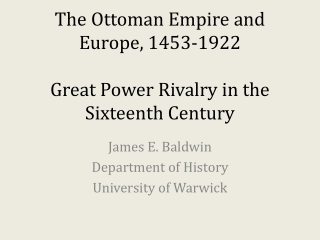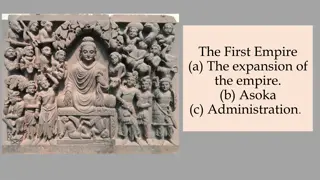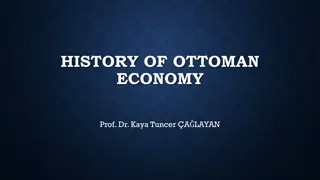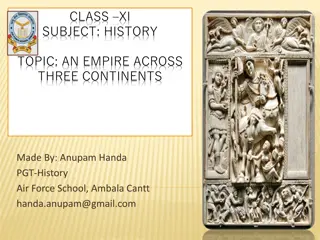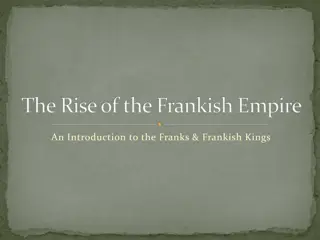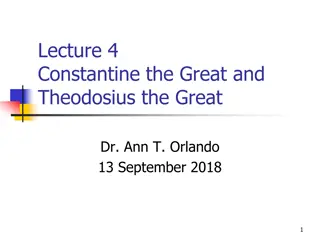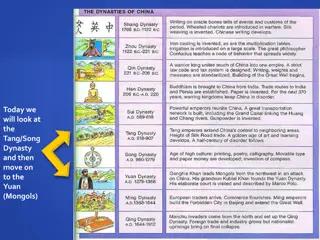
Nineteenth-Century Anthropological Collections and Museums
Explore the influences of Darwinism on collectors like Pitt Rivers, the approach of French anthropologists in establishing facts, and the dual purpose of British museums in the 1860s. Discover how artifacts were arranged to showcase human evolution and cultural connections.
Download Presentation

Please find below an Image/Link to download the presentation.
The content on the website is provided AS IS for your information and personal use only. It may not be sold, licensed, or shared on other websites without obtaining consent from the author. If you encounter any issues during the download, it is possible that the publisher has removed the file from their server.
You are allowed to download the files provided on this website for personal or commercial use, subject to the condition that they are used lawfully. All files are the property of their respective owners.
The content on the website is provided AS IS for your information and personal use only. It may not be sold, licensed, or shared on other websites without obtaining consent from the author.
E N D
Presentation Transcript
COLLECTING EMPIRE Daisy Marshall
WILLIAM RYAN CHAPMAN, 'ARRANGING ETHNOLOGY: AHLF PITT RIVERS AND THE TYPOLOGICAL TRADITION,' IN GEORGE W. STOCKING JR (ED.), OBJECTS AND OTHERS: ESSAYS ON MUSEUMS AND MATERIAL CULTURE (UNIVERSITY OF WISCONSIN, 1985) Pitt Rivers was influenced by Darwinism. Having attended a number of lecture during the 1869s, he came to see it as a parallel to his own work in that his collection similarly showed order and evolution but through human technology instead of the natural world. Phrasing his display method as the persistence of forms , he claimed that through comparing artifact he could show that separated peoples had common traits and that he could reconcile these long past connections. Pitt Rivers believed that the specific arrangement of artifacts was not valuable in that it showed the development of tools but rather that it showed, through analogy, a deeper understanding of the development of different cultures. By comparing similar artifacts, it is possible to show the links that have not been shown elsewhere. Unified by the principle of continuity, or modification by small gradations which could under some circumstances lead to degeneration instead of progress-it was essentially an approach to the classification of material artifacts in terms of criteria of external form p. 33.
NELIA DIAS, 'THE VISIBILITY OF DIFFERENCE: NINETEENTH-CENTURY FRENCH ANTHROPOLOGICAL COLLECTIONS , IN MACDONALD, SHARON (ED.), THE POLITICS OF DISPLAY: MUSEUMS, SCIENCE, CULTURE (LONDON, 1998) The nineteenth-century French school of anthropology was characterized by an endeavor to establish facts. There was a focus on distinguishing between proper facts from interpretation because they believed that by being objective, they could not be contested. However, it has been argued that the anthropologists would begin this task with conclusions already in mind, sought evidence for this and then reached the same conclusion they already had initially. As the anthropologists sought out facts, they focused on mathematical data rather than the use of description which led to the introduction of specific instruments to study items. This included the craniograph which would automatically measure and reproduce the shapes of the cranial and facial profile with higher accuracy in an objective method. This allowed them to noticing details that were imperceptible to the human eye. With regards to the items in the Museum of Natural History, they were displayed in a way to show evidence of the unity of the human over time. Firstly, the guest saw prehistoric human races, then items relating to different physiological varieties and then what they considered contemporary human races (which were classified according to a geographical order). If nineteenth-century French anthropologists saw racial and sexual differences in brains and skulls, this was essentially because the ability to interpret requires a training within a cultural tradition p. 43.
MUSEUMS AND IDEOLOGY: AUGUSTUS PITT-RIVERS, ANTHROPOLOGICAL MUSEUMS, AND SOCIAL CHANGE IN LATER VICTORIAN BRITAIN. IN VICTORIAN STUDIES, BY VAN KEUREN, DAVID S. In the 1860s, British museums had a two-fold purpose which was to firstly provide entertainment to the public and then also provide scientific students with the opportunity to examine and study the items in the museums. As a result, many museums had dual collections, but Pitt Rivers was rare in that his collection was a combination of scientific and educational collections of which he had authority over. Initially, Pitt Rivers focus on rifles led him to notice that their evolution was the result of gradual changes over time and over cultures. He concluded that this idea can be applied to the development and evolution of other aspects of society. By focusing on the smaller category of technology, Pitt Rivers claimed that it would help to provide an analogy for the evolution of human institutions. Based on this idea, Pitt Rivers believed that natural and social laws were interlinked and therefore suggested that in time of social progress, the government should actually turn to the ranks of scientific men for guidance rather than politicians because they can see the world from a higher perspective. The model of evolution that Pitt-Rivers espoused included a unitary evolutionary process that functioned similarly in different contexts. The growth from simplicity to complexity and from homogeneity to heterogeneity similarly described the evolution of the universe and that of the social state p. 186.
DISCUSSION QUESTION To what extent does the existence of the Pitts River Museum perpetuate problematic anthropological practices?

